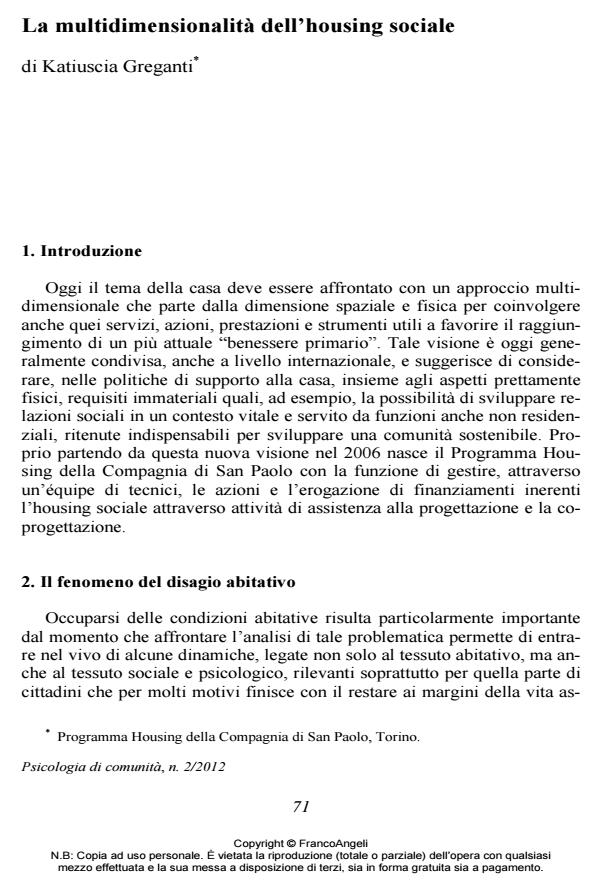The multidimensionality of social housing
Journal title PSICOLOGIA DI COMUNITA’
Author/s Katiuscia Greganti
Publishing Year 2013 Issue 2012/2
Language Italian Pages 10 P. 71-80 File size 353 KB
DOI 10.3280/PSC2012-002007
DOI is like a bar code for intellectual property: to have more infomation
click here
Below, you can see the article first page
If you want to buy this article in PDF format, you can do it, following the instructions to buy download credits

FrancoAngeli is member of Publishers International Linking Association, Inc (PILA), a not-for-profit association which run the CrossRef service enabling links to and from online scholarly content.
Housing conditions are nowadays influenced by an increasing variety of social, demographic and economic dynamics which impact on specific social categories. On one hand, it’s necessary to match all the performance benchmarks and to consider all the different aspects which contribute to provide sustainable housing, on the other hand, in order to work on social housing through financial supports it’s crucial to take into account multidimensionality and complexity of the actions making process, i.e. to adopt an action model which brings together planning and implementing stages. Starting from this assumption, from 2006 the Housing Program of Compagnia di San Paolo manages actions and funding on housing through counseling and co-planning work done by a team of experts. This article intends to explain actions and procedures developed over the time to consider organizations which submit funding requests as active actors of counseling and co-planning. This is a circular process which increases degree of empowerment not only of organizations which benefit of counseling but also of the team of Housing Program itself.
Keywords: Social housing, empowerment, housing difficulties
Katiuscia Greganti, La multidimensionalità dell’housing sociale in "PSICOLOGIA DI COMUNITA’" 2/2012, pp 71-80, DOI: 10.3280/PSC2012-002007